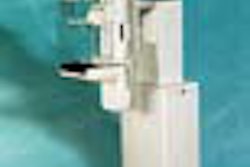The medical imaging industry hasn't given up in its quest to pressure the Health Care Financing Administration (HCFA) into changing its new Medicare hospital outpatient prospective payment system (HOPPS). With the program's August 1 implementation date less than two weeks away, imaging proponents are sensing that the agency might be willing to compromise on key issues.
The HOPPS proposal is designed to rein in hospital outpatient costs by imposing an ambulatory payment classification (APC) scheme that would cut technical reimbursement for many radiology procedures by about 30%. The system would also change Medicare's reimbursement methods for certain procedures and technologies.
For some drugs and devices that couldn't have been billed before 1996, for example, HCFA has established a pass-through classification that allows for separate reimbursement of procedures using the devices, in addition to reimbursement for the procedure performed. In addition, the new plan does not provide additional reimbursement for the use of contrast media.
Among the strongest voices raised against the new system is the National Coalition for Quality Diagnostic Imaging Services (NCQDIS). The organization has been working with HCFA in an effort to negotiate changes in key HOPPS provisions NCQDIS believes will adversely affect outpatient diagnostic imaging.
NCQDIS recently commissioned a white paper in response to the complex new HOPPS rules. The paper, entitled "New Rules for Hospital Outpatient Diagnostic Imaging Services," analyzes key HOPPS provisions and presents organizational alternatives to its fiscal and regulatory challenges.
Prepared by NCQDIS counsel Diane Millman, of the Washington, DC, law firm of McDermott, Will & Emery, the white paper provides details on the HOPPS rules. The paper also proposes analyses and models that hospitals should consider before changing the status and/or organization of their outpatient diagnostic imaging services.
The white paper may be obtained from NCQDIS executive director Cherrill Farnsworth at [email protected] or by contacting Jean LaFonta of Plexus Consulting Group at www.plexusconsulting.com.
The ACR's efforts
Another group leading the charge against the new rules is the American College of Radiology (ACR). On June 6, the ACR sent a letter to HCFA regarding inadequacies within HOPPS' mammography provisions. The letter, from Pamela Kassing, the ACR's director of economics and health policy, presented extensive analysis and recommendations designed to remedy what the ACR called "important deficiencies" in 11 key areas.
Among the proposed remedies, the ACR urged HCFA to:
- Create separate ambulatory payment classifications (APCs) for CT, MRI, and MRA based on use or non-use of contrast media.
- Correct the pass-through list, including changing generic descriptions, completing missing items, and ensuring consistent pass-through reimbursement throughout the calendar year.
- Develop consistency between APC (hospital-based) and PERVU (office-based) systems to ensure a "level playing field" for cost reimbursement.
- Incorporate data from multiple procedure claims to ensure an adequate database.
The ACR balanced its latest comments with appreciation for several revisions HCFA did incorporate into the final rule on HOPPS: an outlier provision, pass-through status for many drugs and devices, the development of "transitional corridors," and the decision not to include diagnostic codes.
Meanwhile, armed with a legal opinion from Millman, the NCQDIS is set to challenge HCFA’s position that new contrast agents are "supplies" rather than "drugs," and are therefore not reimbursable within the transitional pass-through formula.
Based on language in the Medicare and Social Security acts, as well as FDA classifications and listings in the United States Pharmacopoeia, "...we believe that HCFA’s argument that contrast agents are categorically excluded from being considered drugs under the Medicare Act is erroneous," Millman said.
Adapting to HOPPS
While HOPPS may exact a heavy toll on institutions that own or operate outpatient imaging facilities, other businesses could also be indirectly affected.
Jim Deal, of the Center for Diagnostic Imaging (CDI) in St. Louis Park, MN, says that while new HCFA regulations may be bad for hospital revenue, future modifications will ultimately even things out.
"Hospital-owned or -managed outpatient radiology will not disappear," he said. "It will change form. The market adapts to changes in regulations."
The existence of so many hospital outpatient centers will even mitigate the effect of the new rules somewhat, he added.
"Because hospital outpatient centers are the majority of outpatient sites, and because they were reimbursed substantially more by Medicare than freestanding centers, they presented something of a 'cover' for us," Deal said. "In other words, because their rates were so much higher, payors did not scrutinize us as closely as they might have. Now that their rates will be lowered, however, we expect increasing scrutiny on our rates."
For Steve Plochocki, CEO of InSight Health Services in Newport Beach, CA, HOPPS' dark brew may even have a bright side.
"As we see it, the outsourcing of hospital radiology services is a solid strategy for hospitals to protect the patient cap," he suggested. "We’re cautiously optimistic and believe that the new rules will open business opportunities for us. We’re already gearing up our sales and marketing force to capitalize on this opportunity."
Plochocki said that if a hospital can save money by outsourcing radiology, yet still maintain income through an arrangement with a business such as InSight, it could prove mutually beneficial.
For their part, HCFA officials believe that overall, HOPPS with the APC concept will actually increase Medicare reimbursement to hospitals overall by 4%, even though the legislation that created the system was intended to be budget-neutral.
However, NCQDIS, ACR, and other groups maintain that the elusive 4% overall reimbursement increase comes directly at the expense of payments for medical imaging services, which stand to take a 30% cut.
"We’re trying to make it clear to HCFA and Congress that Medicare patients are not going to have access to outpatient facilities on a hospital campus," said Farnsworth of NCQDIS. "That’s difficult because many patients receive their outpatient services at night and on the weekend, and the only place they can go is a hospital because nothing else is open."
In this election year, chances are good that HCFA staffers will be listening attentively as opinion leaders and voters speak their minds. No one expects major changes to either HOPPS or the APCs overnight, but imaging advocates are hopeful that their lobbying efforts will ultimately pay off.
By Sheldon M. SternAuntMinnie.com contributing writer
July 20, 2000
Related Reading
HCFA gives radiology 30-day reprieve from onset of new outpatient system, June 7, 2000.
Radiology awaits arrival of HCFA's new APC payment system, June 5, 2000.
Outpatient rad services could be hit hard by HCFA's new payment system, April 27, 2000.
Let AuntMinnie.com know what you think about this story.
Copyright © 2000 AuntMinnie.com

















